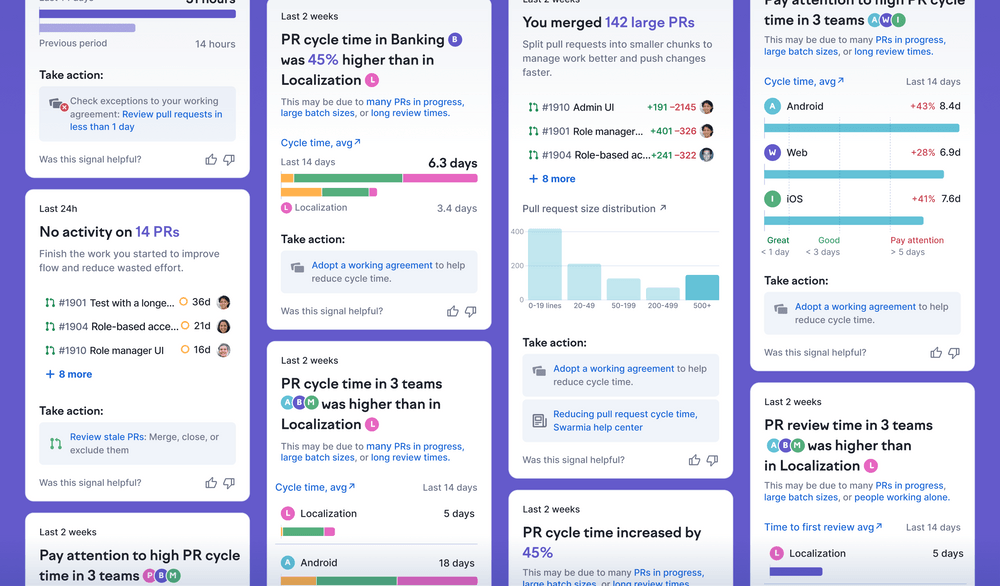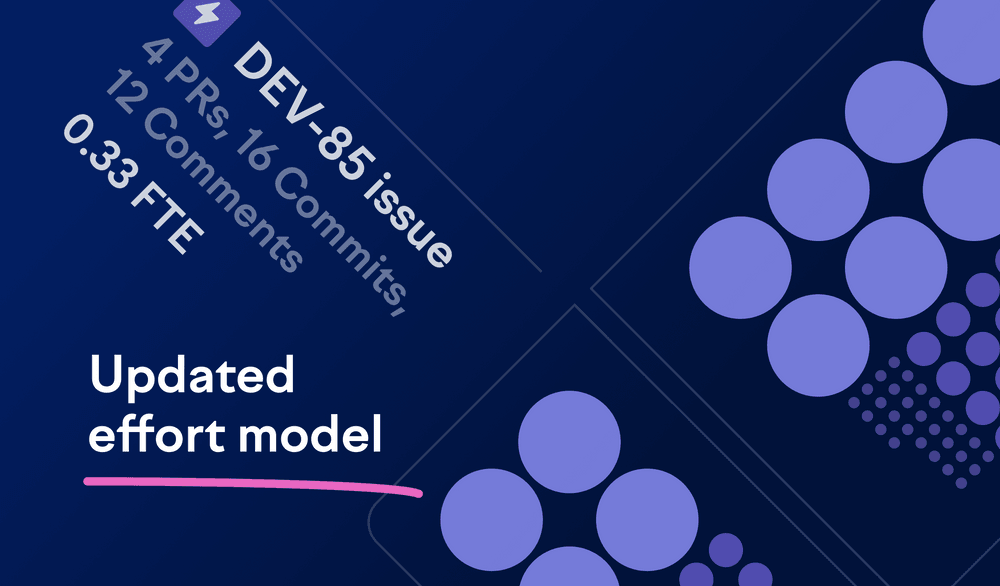
See a more accurate distribution of work with the updated effort model
We’ve refined our developer effort model based on your feedback and extensive testing. If you’re using investment balance or software capitalization, you’re already familiar with FTE (full-time equivalent). It’s our way of showing how much time each developer spends on different tasks.
Here��’s what’s new in the updated effort model:
- Smarter weighting for different types of work
- Automatic detection of inactive periods
- HR system integration for time off
Smarter activity weights
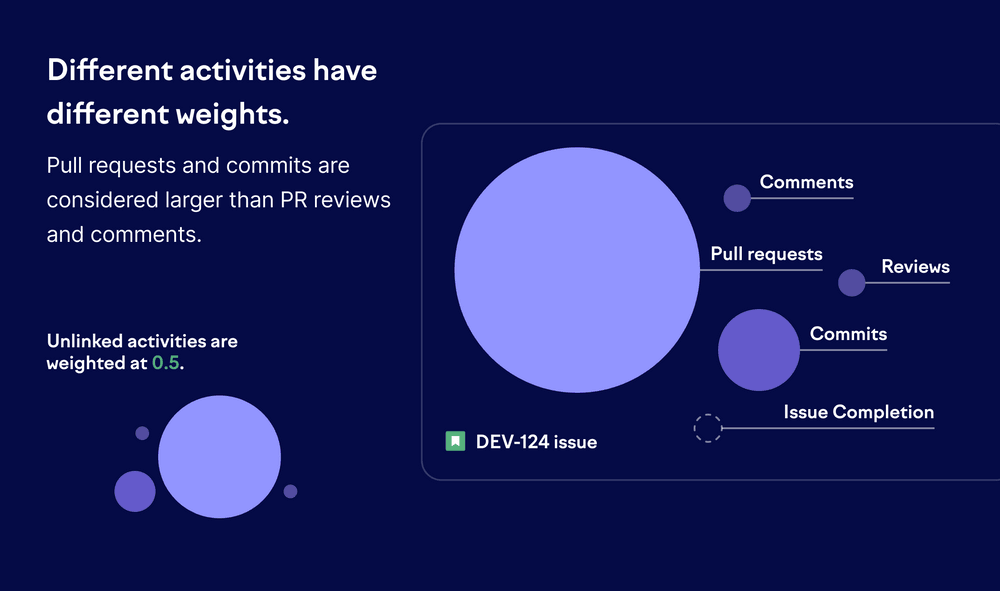
Not all contributions are equal, and our model now reflects that. Pull requests and commits are weighted more heavily than comments and reviews, and issue completions are no longer counted as activities for FTE.
Activities related to unlinked pull requests are also given much less weight than those tied to issues. The result? A more accurate representation of meaningful work.
In addition, all activities related to unlinked pull requests are now weighed significantly lower than those linked to issues.
Smarter handling of inactivity
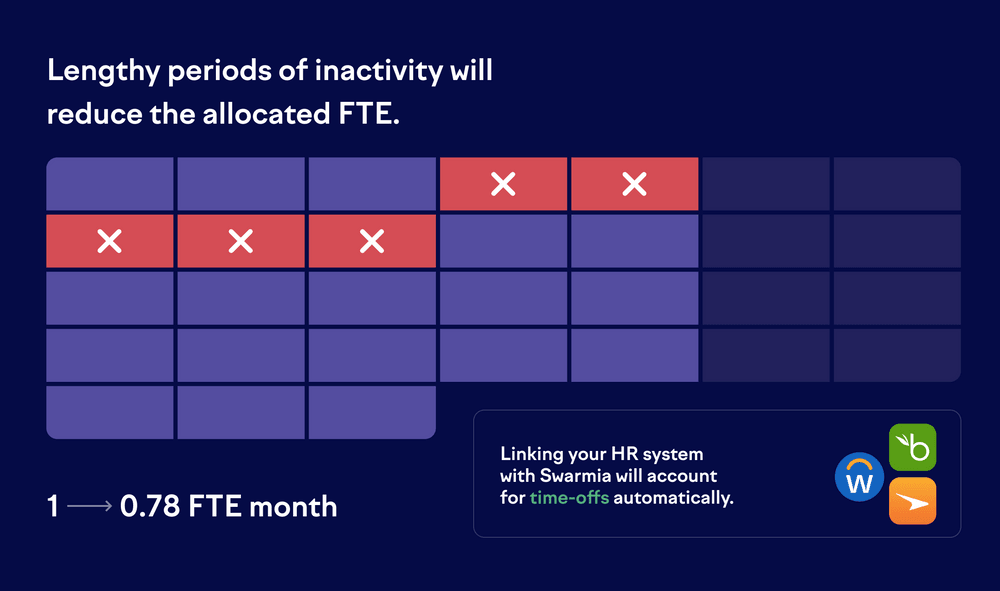
Each developer is still allocated 1 FTE per month, based on their activity. With this update, we’ll automatically detect extended inactivity and reduce allocated FTE accordingly.
Sync time off from your HR system
Want even more accuracy in how working days are counted toward FTE? You can now integrate your HR system with Swarmia. Any synced time off will automatically reduce a developer’s allocated FTE.
Read more about how to get set up and which HR systems we support.
What to expect
In most cases, you’ll see small shifts in FTE numbers. Typically, there is a slight decrease overall, with more effort being attributed to larger, issue-linked work. The model still evaluates each developer individually but with finer-grained logic under the hood.
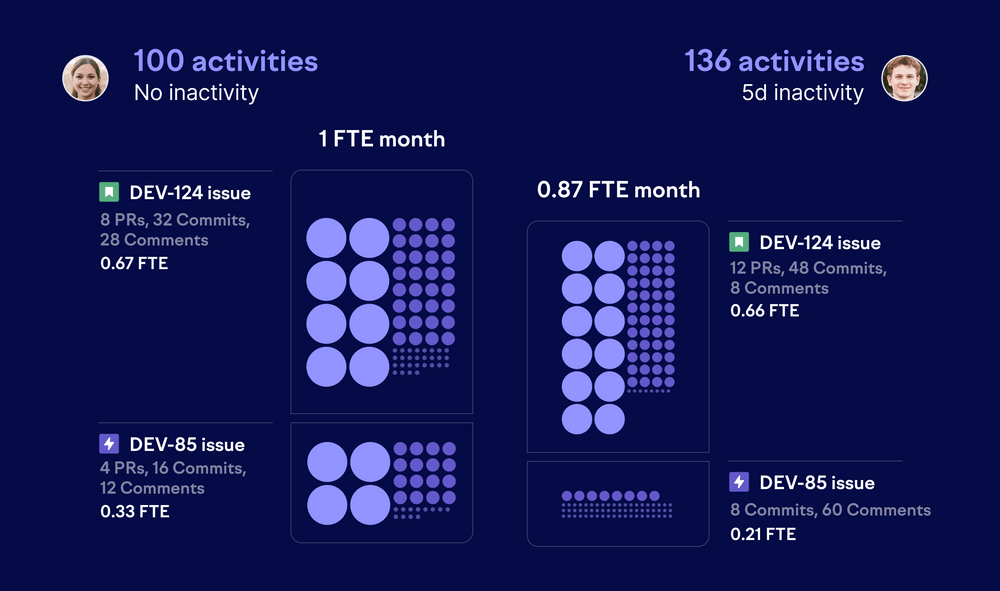
These changes will give you a more accurate view of where developers are putting their focus.
We’re continuously improving our effort model to make it more accurate, and we’ll likely announce more updates later this year. Contact us if you have any questions about the effort model.
Subscribe to our newsletter
Get the latest product updates and #goodreads delivered to your inbox once a month.
More changelog updates

